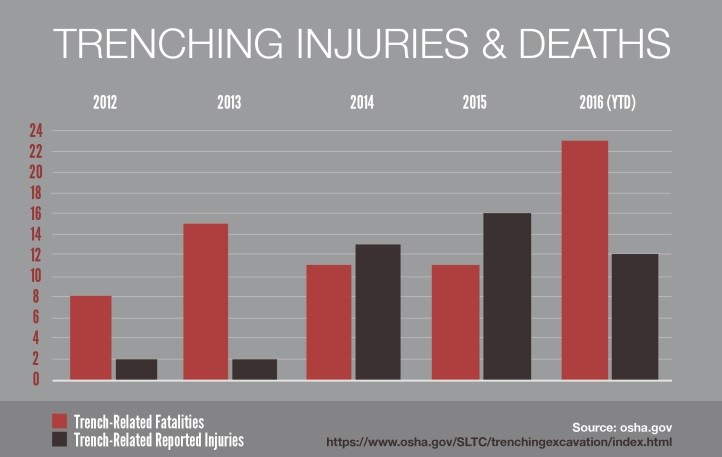In response to an uptick in trench-related deaths among construction workers, the Kentucky Fatality Assessment and Control Evaluation Program has released a hazard alert warning of the dangers of trench work. According to fatality statistics from the Occupational Safety and Health Administration, trenching-related fatalities more than doubled between 2012 and 2016. In the first five months of 2017, there were 15 deaths and 19 injuries related to excavation and trenching operations.
In light of these startling statistics, here are some basic tips that can protect construction workers who perform excavation and trenching activities:
•Before entering a trench, the “competent person” – as defined by OSHA regulations – at the jobsite must inspect the trench and the protection system to ensure that the trench is safe to enter.
•Establish protective measures such as benching, shoring, sloping and shielding for all trenches between 5 feet and 20 feet deep. Trenches 20 feet and deeper require a registered professional engineer to design these systems.
•Any trench or excavation 4 feet or deeper must have a means of exit. Ladders or ramps must be located no more than 25 feet from any employee while he or she is in the excavation.
•Assure that no one is working beneath the path of a load that is being lifted by crane, forklift or excavation equipment.
During the week of June 18-23, 2018, National Utility Contractors Association will sponsor the Trench Safety Stand Down raising the awareness to workers who work in and around trenches and excavations to provide them with information about current excavation requirements and safety procedures for working in trenches. For more information and guidance on this topic, please review the resources within the article and OSHA or contact us here at Landmark Risk Management and Insurance.
This loss control information is advisory only. The author assumes no responsibility for management or control of loss control activities. Not all exposures are identified in this article.

